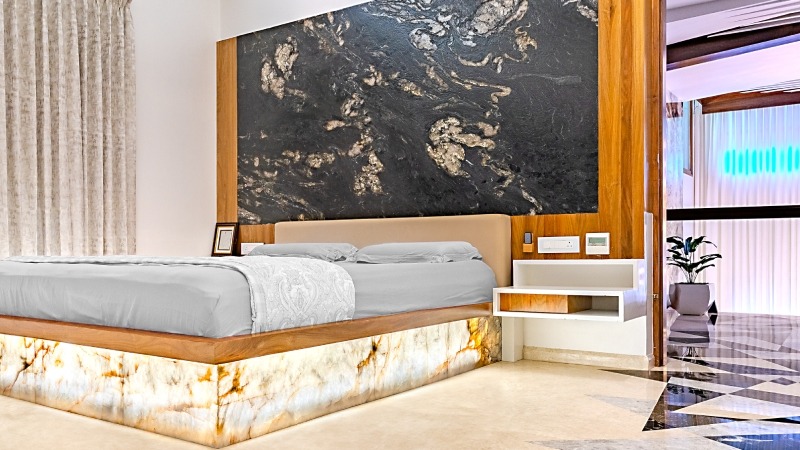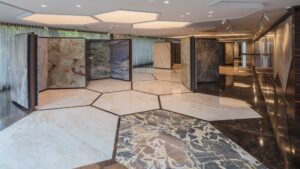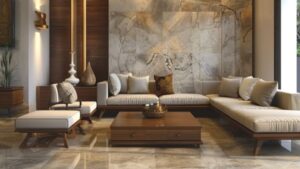Quartzite, a metamorphic rock, is a stunning example of nature’s beauty and durability. Known for its exceptional strength and heat resistance, quartzite is a natural stone that stands up to the test of time. Its unique aesthetic and high-performance properties make it a popular choice for various applications, particularly in high-end homes and commercial spaces.
Quartzite is a natural stone that boasts superior hardness, making it more resistant to scratching and chipping than many other stones. It is also highly resistant to heat and acid, making it an ideal material for kitchen countertops and bathroom vanities.
Composition
Quartzite is formed through the fusion of quartz grains present in sandstone using heat and pressure along collisional tectonic plate boundaries. For instance, when two tectonic plates collide, the earth’s crust is folded and thickened.
Quartzite vs. Marble: A Comparative Analysis
| Features | Marble | Quartzite |
| Chemical COMPOSITION | Marble is classified as a mineral primarily composed of calcite. This makeup is infused with natural physical and chemical impurities, which impart veining and patterns | In contrast to marble, quartzite is composed of sandstone and quartz, both of which are sedimentary rocks, and not a mineral. Additionally, environmental impurities and inclusions impart unique hues to quartzite.
|
| Formation | Marble is initially composed of limestone and calcite, which is a crystalline form of calcium carbonate. Calcite accounts for the majority of marble’s composition, typically more than 90%. | Quartzite is formed through the fusion of quartz grains present in sandstone using heat and pressure along collisional tectonic plate boundaries. For instance, when two tectonic plates collide, the earth’s crust is folded and thickened
|
| Density | 2.55 to 2.75 grams per cubic centimeter | 2.65 grams per cubic centimeter
|
| Hardness | Mohs scale of mineral hardness between 3 and 5 | Mohs scale of mineral hardness is at 7
|
| Porosity | Marble has some degree of porosity, which can vary depending on the type of marble and its formation. This porosity affects its susceptibility to staining and weathering | Quartzite typically has very low porosity due to the recrystallization and compaction of the original sandstone during metamorphism. However, there may still be some pore spaces present, albeit at a minimal level
|
| Physical Characteristics | Marble is considerably softer and more susceptible to chemical degradation
| Quartzite is weather-resistant and rigid |
Quartzite Countertops: Design Inspiration
Quartzite countertops offer a wealth of design possibilities. From classic white to bold blue, quartzite is available in a variety of colors to suit any decor. Its unique texture and veining patterns add a touch of elegance and sophistication to any space.
Quartzite Maintenance: Keeping the Sparkle
Caring for quartzite is similar to caring for granite. Grandlienard recommends wiping up counters regularly with a gentle cleanser, water, and a soft cloth or paper towel.
As with any surface, simple preventative measures should be taken to protect quartzite countertops. Wipe up spills and moisture as quickly as possible, and use coasters, trivets, and cooling racks. Battista also recommends utilizing cutting boards, though perhaps not for the reason you’d expect: “Quartzite is extremely high on the Mohs hardness scale. When it’s that high, it could dull your knives
Maintaining quartzite countertops is relatively straightforward. Regular cleaning with a mild detergent and warm water is usually sufficient.
Quartzite: The Ultimate High-End Material
In conclusion, quartzite is a high-end natural stone that offers a perfect blend of beauty and functionality. Its durability, heat resistance, and easy maintenance make it a top choice for high-end homes and commercial spaces. Whether you’re designing a new kitchen or looking to upgrade your home interiors, quartzite is a high-performance material that truly stands out





